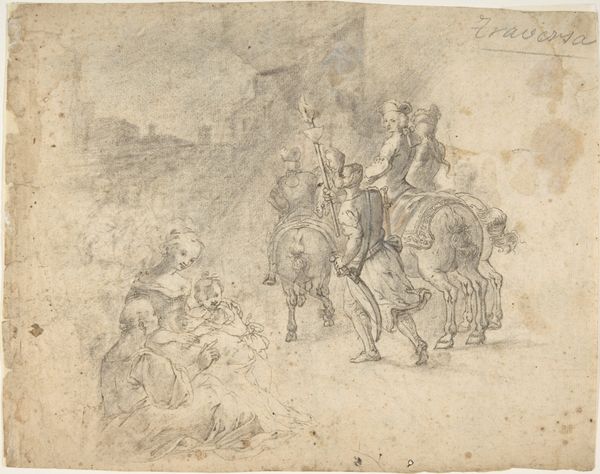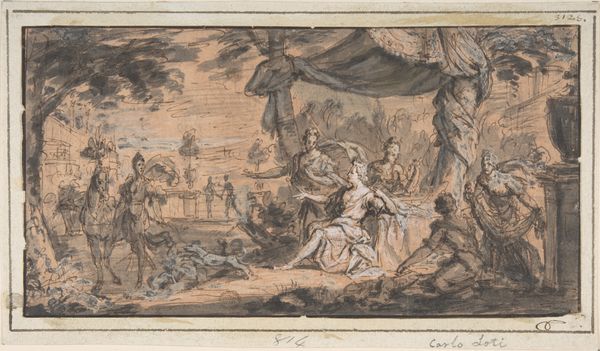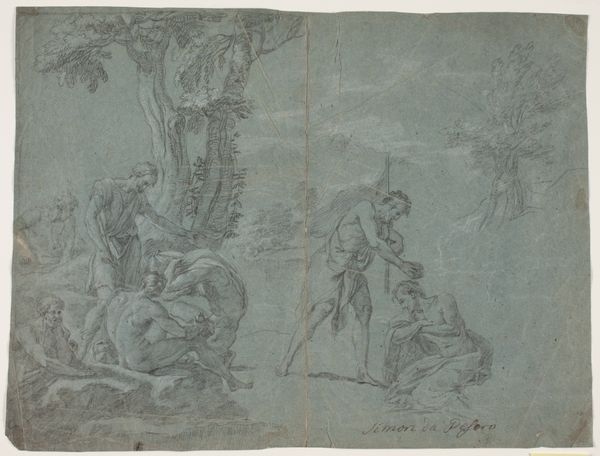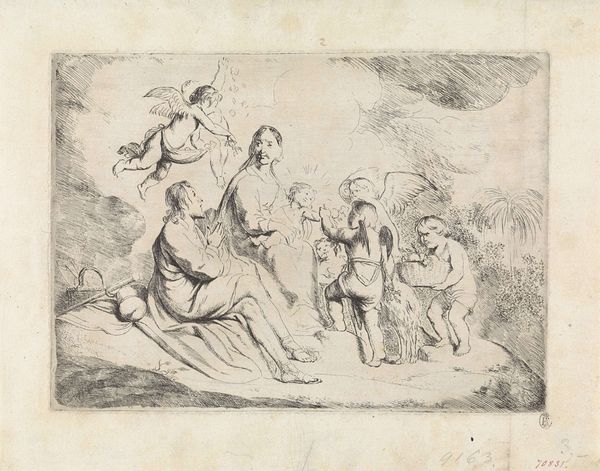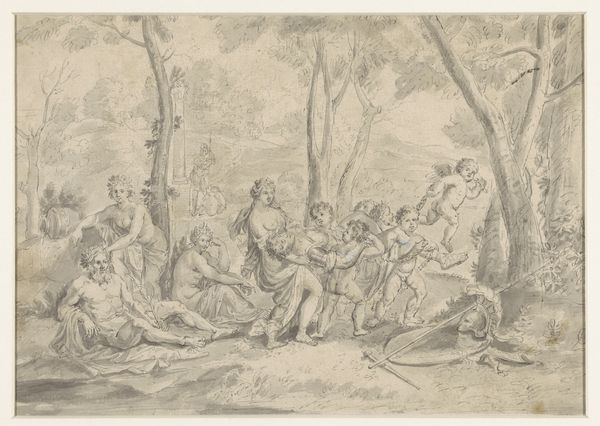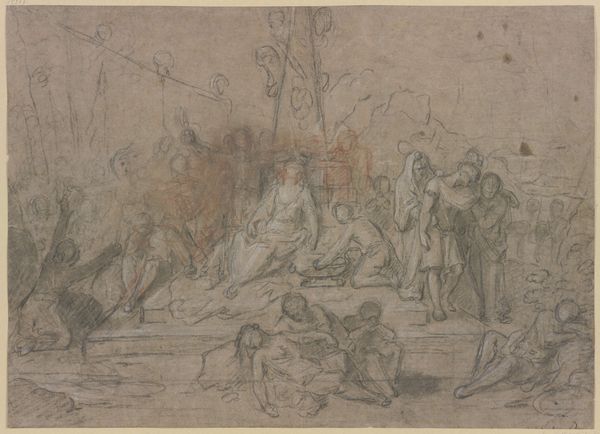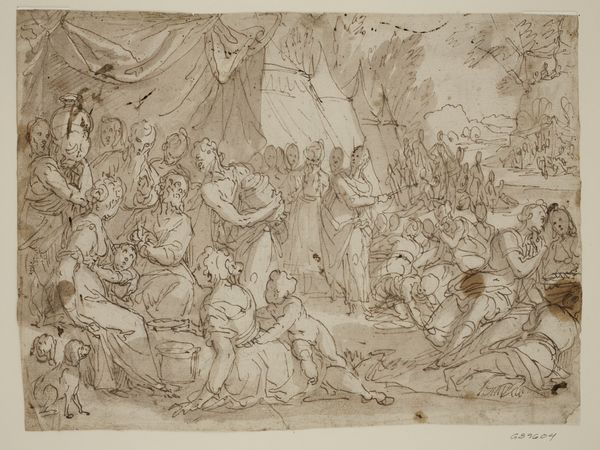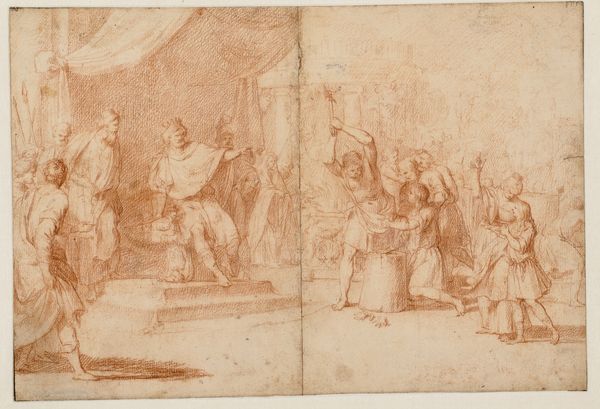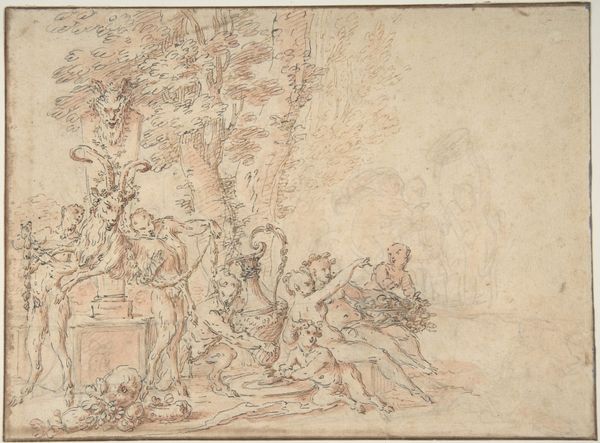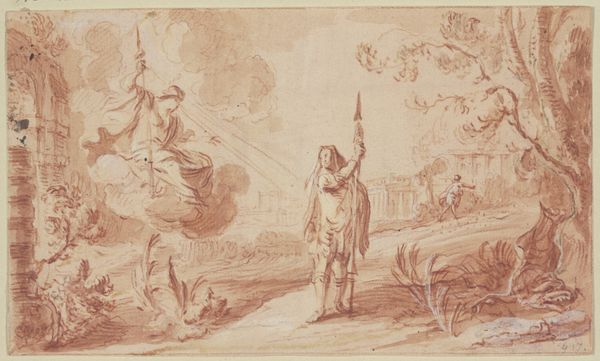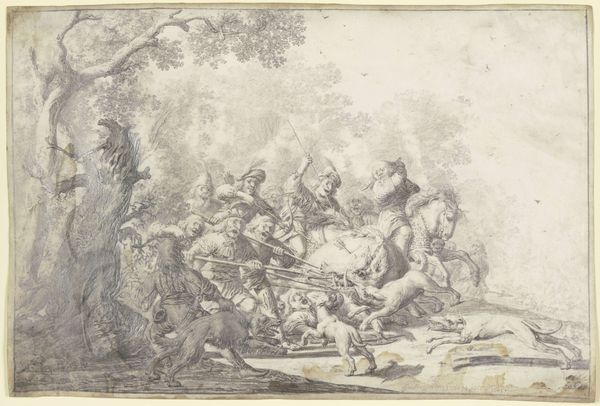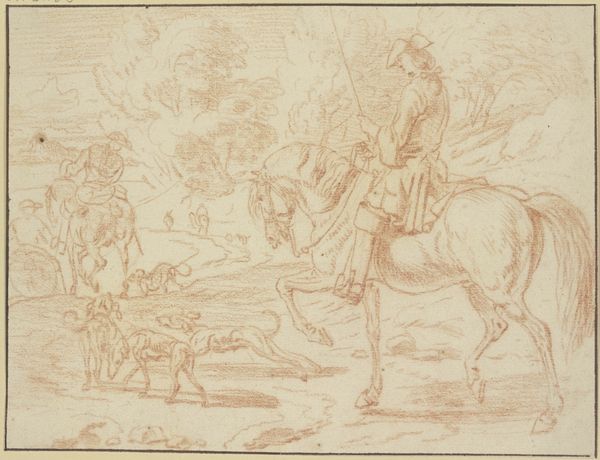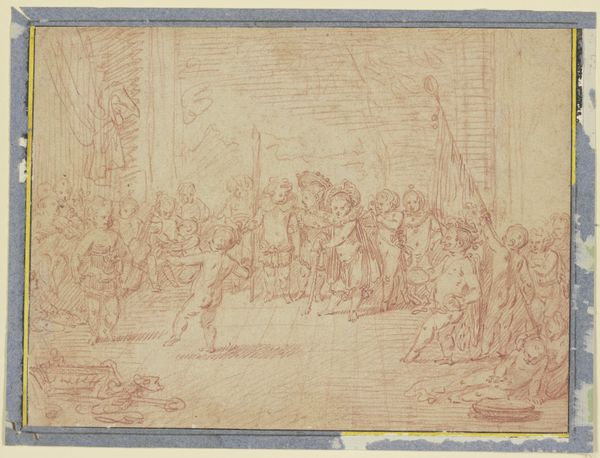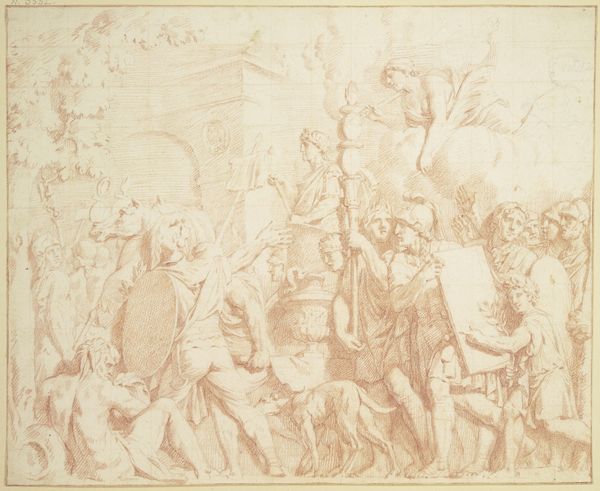
drawing, paper, ink, chalk, graphite
#
drawing
#
baroque
#
figuration
#
paper
#
ink
#
chalk
#
15_18th-century
#
graphite
#
history-painting
Copyright: Public Domain
Editor: So, here we have Johann Baptist Zimmermann’s drawing, "Martyrium des Apostel Paulus," made with ink, graphite, and chalk on paper. It's unsettling to see such a raw depiction of what I assume is Paul's martyrdom. What should we be paying attention to here? Curator: I see this drawing as a potent representation of power, violence, and faith. Considering the historical context, theological interpretations surrounding Paul's execution are numerous. Who held power, and how did religious narratives shape those dynamics? This image captures a specific moment, but how might we broaden our view to consider its implications for marginalised groups? Editor: Marginalized groups? I hadn't thought about that. What does that have to do with this drawing? Curator: Think about how martyrdom narratives can be mobilized. They can solidify power structures by glorifying sacrifice. But let’s ask: whose stories are not being told? Were there women present? How were they affected? Where do other religious perspectives fit into the narrative surrounding Paul's life? Considering Zimmermann was working within the Baroque style, it is worthwhile to consider how drama and theatricality played a role in perpetuating specific ideas of religious authority. Editor: I guess I hadn’t considered that Baroque drama might serve a political function. Now that you mention it, Paul seems almost passive, with the executioner as the focal point. It is all quite overwrought. Curator: Precisely. We must also examine the artistic conventions Zimmermann was engaging with and perhaps subverting, because how are notions of power encoded within the drawing itself? What artistic choices did Zimmermann make, and what statements did they articulate? Editor: It's helpful to think about art this way –not just as pretty pictures but also about whose voices are amplified and silenced by them. Thanks for shifting my focus! Curator: My pleasure. Reflecting on whose stories are privileged, even within a seemingly religious scene, empowers us to seek broader understanding of cultural dynamics and their impact on how we look at art.
Comments
No comments
Be the first to comment and join the conversation on the ultimate creative platform.
